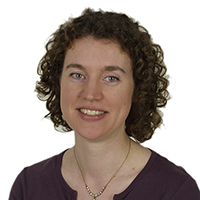Welcome to the third issue of Science in School Editorial article

Editor, Science in School
This issue, like the first two, offers a wide range of subjects and contributors: teachers, scientists, politicians and others from nine European countries cover topics as varied as bird flu, proteomics, solar fusion and what it feels like to discover your very own comet.
In our feature article, world-renowned geneticist Alec Jeffreys, the inventor of DNA fingerprinting, reminisces about his childhood passion for science and describes his current work on the aftermath of the Chernobyl disaster – how profound are the effects and how long will they be felt? Meanwhile, deep below the ocean surface, scientists are using plankton to predict an even more far-reaching phenomenon: climate change.
If you prefer something more hands-on, Graham Gardner is sure to entertain and inspire with his school detective mystery. Or why not help save European bumblebees, explore the behaviour of maggots, or investigate whether a good night’s sleep really does help you to learn?
In the events section, we review some recent and future activities in science education across Europe. Stephen Parker from the European Commission describes the excitement of the European Union Contest for Young Scientists in Stockholm; Sabina Griffith reports on how EIROforum took a group of young people for a virtual trip around the world; and Douglas Pierce-Price invites school students to enter an astronomy competition and win a trip to Chile.
When several readers asked us to include articles on the history of science, we took up the challenge. This issue offers not only a consideration of the Muslim contribution to Western science and a fascinating project combining evolution and anatomy, but also a do-it-yourself (and then eat-it-yourself) geological map.
But Science in School is not only for you; it also depends on your involvement. You can leave comments online for all readers to see or email your suggestions directly to us. We are also still looking for teachers to join our reviewer panel, to help us decide which articles to include and how to improve them.
Several of you have already translated Science in School articles from English, to make them available to a wider European audience. Thanks to your efforts, we now have articles online in 16 languages (Albanian, Bulgarian, Czech, Dutch, Estonian, French, German, Italian, Latvian, Portuguese, Romanian, Russian, Slovene, Spanish, Swedish and Ukrainian).This is a good start, but we still need more help: we are still far from including all articles in all European languages. If you would like to help, please contact us.
Finally, you are not only our readers, but also potential authors. Have you prepared some original and exciting teaching materials? Are you involved in a project that could serve as a role model for teachers, scientists or museums in other European countries? Would you like to try your hand at writing a short, amusing and informative article for the ‘Back in the staffroom’ slot? Or do you use a popular film to teach an aspect of science?
We are looking particularly for good ideas for interdisciplinary teaching, as well as articles on chemistry, mathematics and earth sciences. Have you combined science topics in a creative way? Or linked science with subjects such as art, languages, information technology (IT) or ethics? Perhaps you’ve looked at the connections between mathematics, physics and medieval church architecture? Or used Google Earth in a biology lesson? This is your chance to share those ideas with teachers and others across Europe!
In the meantime, enjoy the articles in this issue.





